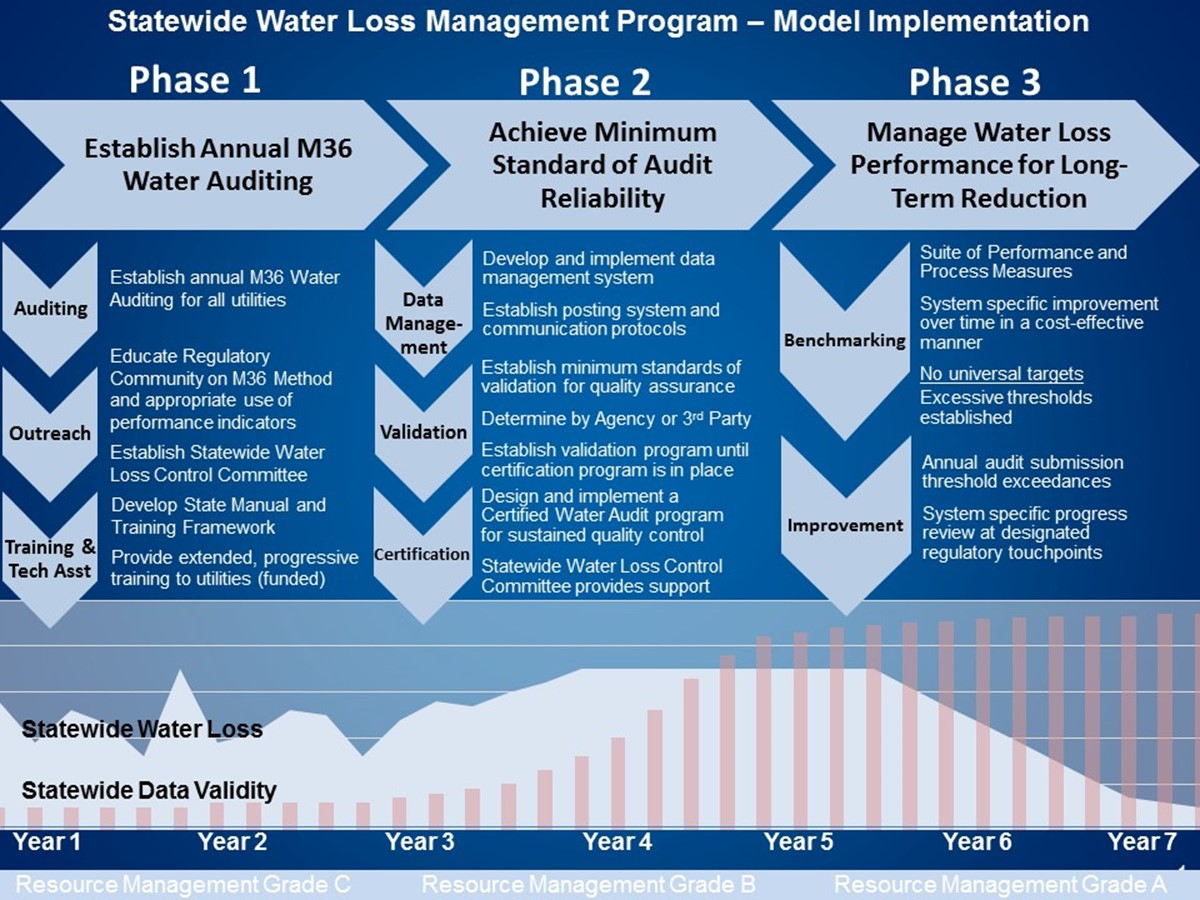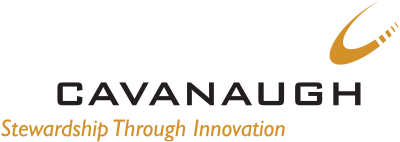I recently had the opportunity to speak at the Association of State Drinking Water Administrators in Albuquerque, New Mexico. There were close to 200 State Drinking Water Administrators and EPA officials in attendance to learn about the critical importance of Non-Revenue Water management in our North American utilities. The presentation was interactive and focused on “what not to do” (outdated business practices, like requirements for reporting percent of input volume) and ways in which states can appropriately ramp in to true meaningful statewide water loss and improvement in water efficiency practices.
The roadmap for water efficiency is shown and represents the strategy the State of Georgia is implementing. As a state, they continue to lead the way for the rest of the nation.

Phase One is describes the critical importance of getting started and training on best business practices of performing standard annual water audits using the AWWA M36 methodology. Questions from the ASDWA audience were “What if I don’t have all of the information? How can I have a meaningful audit?” This is the beauty of the free water audit software – you can begin with whatever data you have. Once entered, the data can be scored based on the accuracy of the information. Often times improving the accuracy of the data is the first and most effective step. This allows the system to see improvements as they complete the audit annually. This habit of building an annual submission is critical to sustaining a program. States that are making water loss control a priority through tracking of Non-Revenue Water efforts are providing the requirement, the outreach and the technical assistance/training to guide utilities to these best practices. This is also helping these utilities foster customer confidence in their operations. Teaching the regulatory administrators to stop asking outdated questions is the key element to Phase One.
Phase Two is achieving a minimum standard of audit reliability. While getting by utilizing the free audit software top down tool is important, assuring that the information is meaningful and improving is just as critical. Several of our US States require annual submission of water audits with no requirement for validation. As the old saying goes, garbage in equal’s garbage out. Unfortunately, the numbers that are populated in the audit software and in the annual water balance are then taken at face value and often time’s business decisions are being made using very poor information. One key example is in source meters. The very first element of the water balance is measuring how much water you are putting into the system. You would be amazed to know how many US water utilities think they have tested and hydraulically verified the amount of water going into their system but the fact is that case history shows that 49% of the source meters that were a part of a pilot program by the Georgia Environmental Finance Authority failed to deliver accurate information – sometimes in the order of 20-30% inaccurate. The key element is to validate the information going into the audit and determining whether the accuracy can be improved. As data scores go up, so does the confidence in how much water loss is actually occurring. This allows for development of a proper strategy to attack those losses.
Phase Three is managing water loss performance for long term reduction. This happens with benchmarking and also having a suite of process and performance measures, where by system specific improvements can be made. It simply is inappropriate and poor compliance strategy to work from a percentage just so it can be “easy” for the regulator to look for systems they can deem underperforming. The North American water industry needs to catch up to the rest of the world and value water for its true cost and scarcity in supply. If we are simply screening based on a percent, then this faulty practice will lead to poor results in long term management.
The wonderful success of the Albuquerque experience was the receptive body language and interaction of those utility administrators learning that they are asking the wrong questions and are interested in making the necessary changes to start changing the dialogue. The utilities are anxious to do their part, the funders are ready to fund their part and now the regulators are looking to complete the cycle.
This could be the start of a true water loss implementation program for the Nation.

